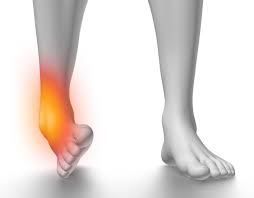Ankle sprains are one of the most common injuries to occur in the athletic and general population. Of all ankle sprains, more than three-quarters are lateral ankle sprains. It results from a forced plantarflexion and inversion movement - more commonly termed as “rolling in of the ankle” joint. It is generally a straightforward injury, however, poor management and rehabilitation of this injury can lead to long-standing pain, mechanical instability, functional deficit, and increased likelihood of re-injury.
Of all ligaments in the lateral ankle complex, the anterior talofibular ligament (ATFL) is most frequently compromised in a lateral ankle sprain. The calcaneo-fibular (CFL) and posterior talofibular ligaments (PTFL) are also at risk in more serious ankle sprains.
In recent years, the POLICE Principle has been established as a good method for the acute management of musculoskeletal injuries.
Protect
- Emphasis on minimizing further tissue damage. This may include immobilization in a moon boot / brace or adequate rest to allow the injury to heal
- It is crucial to note that the period of immobilization should be carefully considered to minimize the adverse effects of immobility.
Optimally Load
- The appropriate amount of activity can help reduce ankle stiffness and lower leg atrophy during the healing process. It is also able to help manage swelling through muscle contraction of the calf to help push the oedema upstream and back into the lymphatic system.
- It is important to note that in the instance of severe injuries (Eg. fractures) that this may not apply.
Ice
- The purpose of ice is to cause vasoconstriction to slow and prevent further swelling in the injured area. This is extremely important to permit early range of motion exercises. Ice can also help modulate the perception of painful stimuli to the brain which may help reduce pain and muscle spasms
- An appropriate method to ice application is to wrap an ice pack in a towel and to place moderate pressure with it onto the painful area for a period of 10 mins on and 10 mins off.
Compression
- An elasticated bandage may be used to apply a comfortable compression force without causing occlusion of blood flow or pain. To promote removal of excessive fluid, the bandage should be applied most tightly distal to the ankle joint with gradual reduction in compression force as you move proximally.
Elevation
- Raising the injured ankle to rest above the level of the pelvis will increase venous return and facilitate waste removal from the site of the injury.
These are general recommendations to follow after an acute lateral ankle sprain. It is important to consult with your physiotherapist as they can offer further advice that is specific to your presentation. Depending on the severity of your ankle sprain, they may advise on the severity of injury and healing time frames, immobilization and mobility aids, radiological investigations, and an appropriate management plan for return to function.

